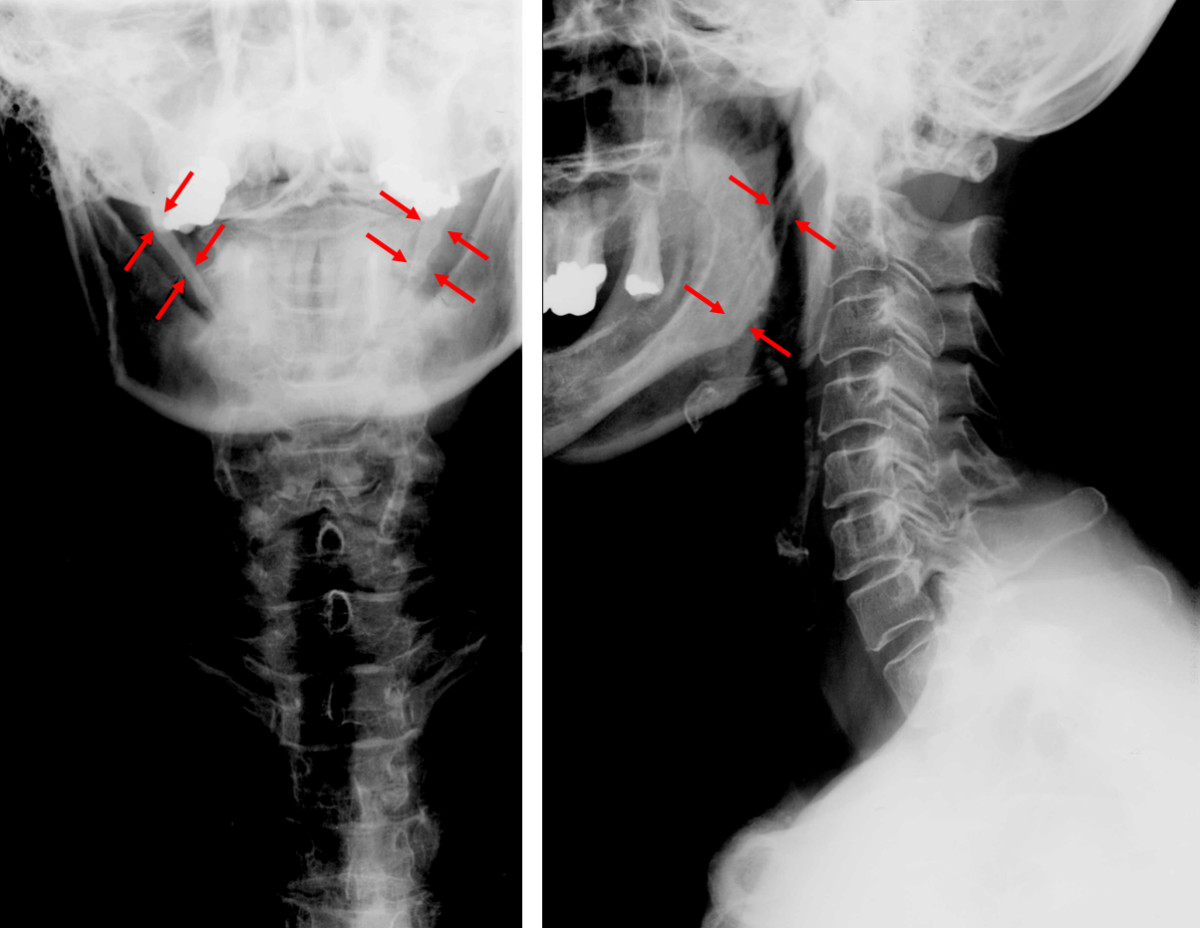Eagle Syndrome

Eagle syndrome is characterized by recurrent pain in the middle part of the throat (oropharynx) and face. "Classic Eagle syndrome" is typically seen in patients after throat trauma or tonsillectomy. Symptoms include dull and persistent throat pain that may radiate to the ear and worsen with rotation of the head. Other symptoms may include difficulty swallowing, feeling of something stuck in the throat, tinnitus, and neck or facial pain. A second form of Eagle syndrome unrelated to tonsillectomy causes compression of the vessel that carries blood to the brain, neck, and face (carotid artery). This form can cause headache and dizziness.
Eagle syndrome is due to a calcified stylohyoid ligament or an elongated styloid process. The styloid process is a pointed part of the temporal bone that serves as an anchor point for several muscles associated with the tongue and larynx.
The mainstay treatment for Eagle syndrome is surgery to shorten the styloid process (styloidectomy). Medical management may include the use of pain and anti-inflammatory medications, antidepressants, and/or steroids. The overall success rate for treatment (medical or surgical) is about 80%.
Eagle syndrome is due to a calcified stylohyoid ligament or an elongated styloid process. The styloid process is a pointed part of the temporal bone that serves as an anchor point for several muscles associated with the tongue and larynx.
The mainstay treatment for Eagle syndrome is surgery to shorten the styloid process (styloidectomy). Medical management may include the use of pain and anti-inflammatory medications, antidepressants, and/or steroids. The overall success rate for treatment (medical or surgical) is about 80%.